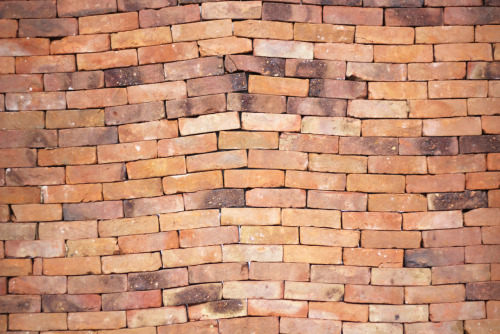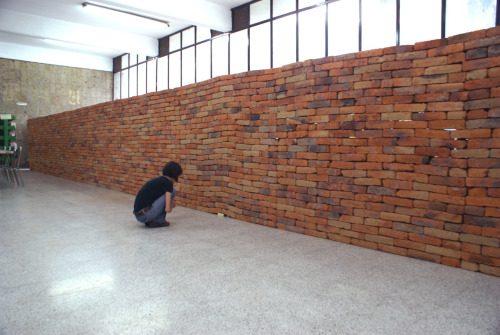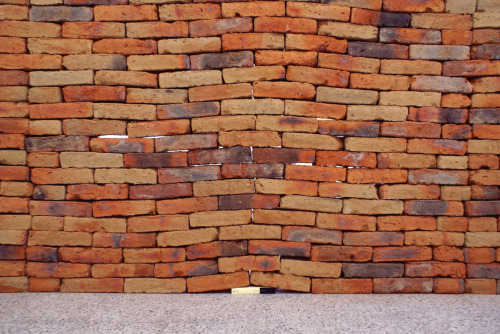Dolce Far Niente In Dance Sport - Dance Comp Review
Dolce Far Niente in Dance Sport - Dance Comp Review
New Post has been published on http://dancecompreview.com/dolce-far-niente-dance-sport/
Dolce Far Niente in Dance Sport
It wasn’t that long ago, when I set up a new training schedule for my partner and I: a plan with all the goals, the training sessions and the topics we wanted to improve. To be honest, I was proud of what I created, because it was so thought through along with a lot of things finally falling into place. Well, at least these were my thoughts – until I brought the plan for discussion to a private lesson with our coach…
I am so glad that I had a professional eye to look over this! When he saw the schedule, he nodded and then said: “Good work so far, but there is one crucial thing missing.” It was like a wakeup call when he told me: “I see everything in this plan, except for the time when you do nothing at all”. That was it! I totally forgot to plan the time for regeneration: one of the key components when it comes to successful training.
In a (dance)-society that is (mostly) driven by the words higher, faster, stronger, we all tend to forget that we only get better in the time we leave our bodies to regenerate. This doesn’t mean of course that we will get better by doing nothing at all. It’s all about doing nothing AFTER we have been working hard. For instance, if we want to make our muscles more powerful, they first have to be exhausted and then they need time to rebuild to an even stronger version. But also our brain needs downtime to process new information. If we learn something new, it’s first saved in the short-term memory and then by processing the information, it will probably be stored in the long-term memory. And as we all know, in sleep our brain consolidates memories best.
Active work demands for active recovery from the physical and mental demands, in order to improve what we are doing. This goes for nearly all aspects in life and also perfectly for dancing. What do I mean by “active recovery”? Here is a quick and personal list:
Giphy
Low Impact Activities
It’s always great to go on a short, easy 15-minute-walk. You can also do a really low impact Yoga session or stretch a little bit. Everything that makes you feel calm, relaxed and refueled. But don’t overdo it! Really give your body a rest!
Giphy
Nutrition
Of course and as always, what you put into your body is crucial. A balanced nutrition is key to your healthy body as well as active recovery. Try to really control the amounts and also the quality of food you are taking in, and your exhausted muscles will thank you. Not to mention, your concentration on the next lesson will be so much better. One really important tip to keep in mind is, that starving your body (in case you are trying to lose weight or you’ve been telling yourself that “you don’t have time to eat”) is not good for your recovery at all. It will stress your system even more and will not let your body improve.
Giphy
Sleep
According to the National Sleep Foundation, Serena Williams, a really successful tennis player, enjoys to go to bed at 7pm in order to get enough sleep. I am not telling you, that this would also work for you, but it is worth giving a thought. I used her example to really emphasize on how important sleeping is, even more for people who are physically active. It doesn’t matter if you consider yourself as a serious athlete/artist, or if you are just in it for fun, but getting the right amount of sleep is decisive to your performance and also to your improvement. Adults between the age 18 and 64 need between 6 and 11 hours, while 7-9 hours of sleep are recommended. I understand that this is a lot of time, but, in my opinion, sleeping is not enough of a priority anymore. Find yourself a sleeping schedule and also keep it on the weekends. Turn off electronics, find your ideal light, sound and temperatures in your bedroom and give your system a chance to reboot.
Giphy
Let go of the “Coulda Woulda Shoulda”
If you now come to the conclusion that some downtime for yourself is what you need, you also have to let go of all the Rumba Walks you could have practiced in that time. Really! Focus on relaxing, recovering and refueling your energy! And, stop overthinking all the things you could’ve, should’ve or would’ve been able to do then. Just enjoy the famous Dolce Far Niente. And, afterwards – Dance on, even better than before!
Author: Sophia Wedel Photography: Maggiore Fotografico Exclusively for Dance Comp Review
More Posts from Stubborn-turtle-blog and Others

One of the Huffington Post's article on the GOP convention included this at the end.

Whoah
2016: This Year at NASA!
As 2016 comes to a close and prospects of the new year loom before us, we take a moment to look back at what we’ve accomplished and how it will set us ahead in the year to come.

2016 marked record-breaking progress in our exploration activities. We advanced the capabilities needed to travel farther into the solar system while increasing observations of our home and the universe, learning more about how to continuously live and work in space and, or course, inspiring the next generation of leaders to take up our journey to Mars and make their own discoveries.
Here are a few of the top NASA stories of 2016…
International Space Station
One Year Mission…completed!

NASA astronaut Scott Kelly and Russian cosmonaut Mikhail Kornienko returned to Earth after spending a year in space. Testing the limits of human research, findings from their One Year Mission will help send humans farther into space than ever before.
Commercial Resupply

Commercial partners Orbital ATK and SpaceX delivered tons (yes literally tons) of cargo to the International Space Station. This cargo supported hundreds of science experiments and technology demonstrations crucial to our journey to Mars.
Mars
Expandable Habitats

The Bigelow Expandable Activity Module (BEAM) was one of the technology demonstrations delivered to the space station in April. Expandable habitats greatly decrease the amount of transport volume for future space missions.
Booster Test Firing

In June, a booster for our Space Launch System (SLS) rocket successfully fired up. It will be used on the first un-crewed test flight of SLS with the Orion spacecraft in 2018. Eventually, this rocket and capsule will carry humans into deep space and one day…Mars!
InSight

This year we updated the milestones for our InSight mission with a new target launch window beginning in May 2018. This mission will place a fixed science outpost on Mars to study its deep interior. Findings and research from this project will address one of the most fundamental questions we have about the planetary and solar system science…how in the world did these rocky planets form?
Solar System and Beyond
Juno

On July 4, our Juno spacecraft arrived at Jupiter. This mission is working to improve our understanding of the solar system’s beginnings by revealing the origin and evolution of Jupiter.
OSIRIS-REx

In September, we launched our OSIRIS-REx spacecraft…which is America’s first-ever asteroid sample return mission. This spacecraft will travel to a near-Earth asteroid, called Bennu, where it will collect a sample to bring back to Earth for study.
James Webb Space Telescope

In February, the final primary mirror segment of our James Webb Space Telescope was installed. This will be the world’s most powerful space telescope ever, and is scheduled to launch in 2018. Webb will look back in time, studying the very first galaxies ever formed.
Kepler

In May, our Kepler mission verified the discovery of 1,284 new planets. Kepler is the first NASA mission to find potentially habitably Earth-sized planets.
Earth Right Now
Earth Expeditions

Our efforts to improve life on Earth included an announcement in March of a collection of Earth Science field campaigns to study how our planet is changing. These Earth Expeditions sent scientists to places like the edge of the Greenland ice sheet to the coral reefs of the South Pacific to delve into challenging questions about how our planet is changing…and what impacts humans are having on it.
Small Satellites

In November, we announced plans to launch six next-generation Earth-observing small satellite missions. One uses GPS signals to measure wind in hurricanes and tropical systems in greater detail than ever before.
Aeronautics Research
Our efforts in 2016 to make air travel cleaner, safer and quieter included new technology to improve safety and efficiency of aircraft arrivals, departures and service operations.
X-Plane

In June, we highlighted our first designation of an experimental airplane, or X-plane, in a decade. It will test new electric propulsion technology.
Drone Technolgy

In October, we evaluated a system being developed for the Federal Aviation Administration to safely manage drone air traffic.
Technology
Electric Propulsion

We selected Aerojet Rocketdyne to develop and advanced electric propulsion system to enable deep space travel to an asteroid and Mars.
Spinoffs

Our technology transfer program continued to share the agency’s technology with industry, academia and other government agencies at an unprecedented rate.
Centennial Challenges

Our Centennial Challenges program conducted four competition events in 2016 to spark innovation and enable solutions in important technology focus areas.
Watch the full video recap of ‘This Year @NASA’ here:
Make sure to follow us on Tumblr for your regular dose of space: http://nasa.tumblr.com

Memories of Gonder prior to Timket 2015. A traditional dancer at one of Gonder’s more famous cultural restaurants. The Tej made it all a blur but I had the presence of mind to pull out the xT1 and go up to some extreme ISO to try to make this pic. I am always inspired by Eskesta especially when done by some of the most beautiful woman on the planet… #Ethiopia #Ethiopian #EthiopianOrthodoxChurch #EthiopianOrthodoxTewahedoChurch #Timket #Timket2015 #culturaldance #Eskesta #Habesha #HabeshaCulture #PhotoToaster #fuji #fujifilm #fujixt1
Less pollution and lighter, more efficient bricks? Yes, please

Forms of government in 2016






A Single Book Can Alter The Strongest Of Foundations
Installation artist Jorge Mendez Blake creates a powerful brick sculpture titled “The Castle”. The intimidating wall, formidable and erect, loses its symmetry and forms a rift at the point where a book it inserted at its root.
Keep reading
It’s Friday...Come Space Out with Us
It’s Friday…which seems like a great excuse to take a look at some awesome images from space.
First, let’s start with our home planet: Earth.

This view of the entire sunlit side of Earth was taken from one million miles away…yes, one MILLION! Our EPIC camera on the Deep Space Climate Observatory captured this image in July 2015 and the picture was generated by combining three separate images to create a photographic-quality image.
Next, let’s venture out 4,000 light-years from Earth.

This image, taken by the Hubble Space Telescope, is not only stunning…but shows the colorful “last hurrah” of a star like our sun. This star is ending its life by casting off its outer layers of gas, which formed a cocoon around the star’s remaining core. Our sun will eventually burn out and shroud itself with stellar debris…but not for another 5 billion years.
The material expelled by the star glows with different colors depending on its composition, its density and how close it is to the hot central star. Blue samples helium; blue-green oxygen, and red nitrogen and hydrogen.
Want to see some rocks on Mars?

Here’s an image of the layered geologic past of Mars revealed in stunning detail. This color image was returned by our Curiosity Mars rover, which is currently “roving” around the Red Planet, exploring the “Murray Buttes” region.
In this region, Curiosity is investigating how and when the habitable ancient conditions known from the mission’s earlier findings evolved into conditions drier and less favorable for life.
Did you know there are people currently living and working in space?

Right now, three people from three different countries are living and working 250 miles above Earth on the International Space Station. While there, they are performing important experiments that will help us back here on Earth, and with future exploration to deep space.
This image, taken by NASA astronaut Kate Rubins shows the stunning moonrise over Earth from the perspective of the space station.
Lastly, let’s venture over to someplace REALLY hot…our sun.

The sun is the center of our solar system, and makes up 99.8% of the mass of the entire solar system…so it’s pretty huge. Since the sun is a star, it does not have a solid surface, but is a ball of gas held together by its own gravity. The temperature at the sun’s core is about 27 million degrees Fahrenheit (15 million degrees Celsius)…so HOT!
This awesome visualization appears to show the sun spinning, as if stuck on a pinwheel. It is actually the spacecraft, SDO, that did the spinning though. Engineers instructed our Solar Dynamics Observatory (SDO) to roll 360 degrees on one axis, during this seven-hour maneuver, the spacecraft took an image every 12 seconds.
This maneuver happens twice a year to help SDO’s imager instrument to take precise measurements of the solar limb (the outer edge of the sun as seen by SDO).
Thanks for spacing out with us…you may now resume your Friday.
Make sure to follow us on Tumblr for your regular dose of space: http://nasa.tumblr.com
-
 stubborn-turtle-blog reblogged this · 8 years ago
stubborn-turtle-blog reblogged this · 8 years ago -
 stubborn-turtle-blog liked this · 8 years ago
stubborn-turtle-blog liked this · 8 years ago -
 dancecompreview reblogged this · 8 years ago
dancecompreview reblogged this · 8 years ago
Gaming, Science, History, Feminism, and all other manners of geekery. Also a lot of dance
243 posts










